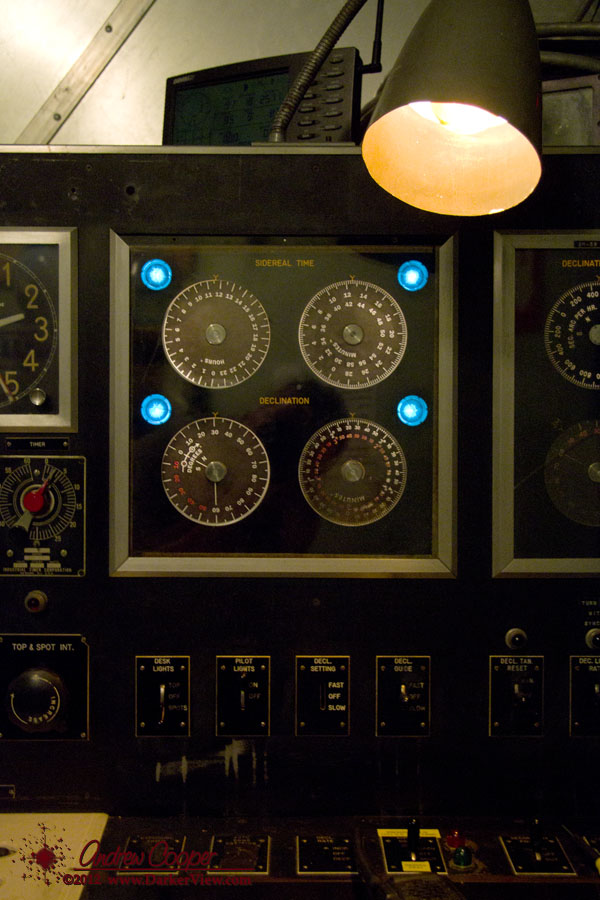
Control

When you want to see the stars, find someplace dark

Mt. Hamilton and Lick Observatory are located in the middle of the Diablo Range overlooking San Jose and San Francisco. From this high peak the sunsets reveal a beautiful view of the rest of the range when rich light mixes with haze and smog from the city.
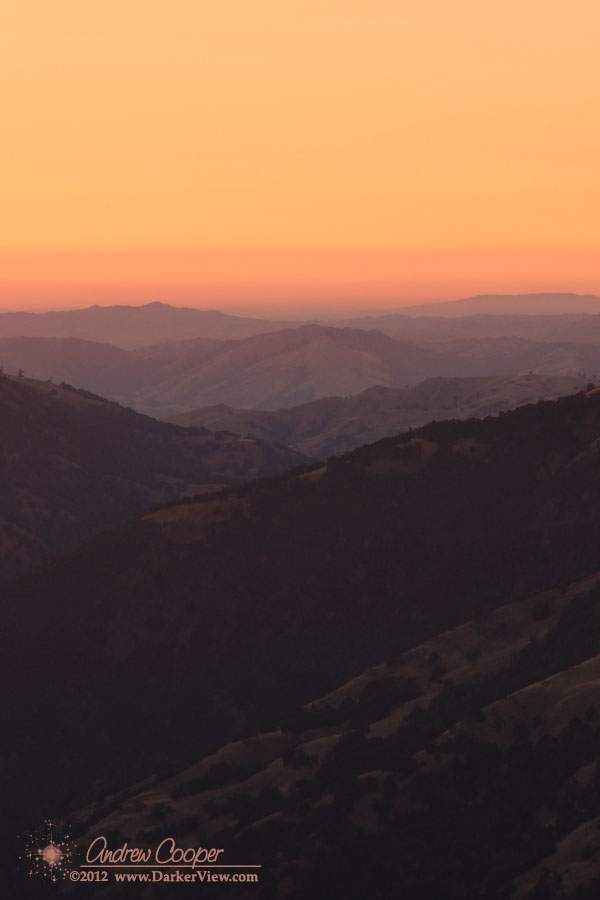
The visitor directions on the website had specifically cautioned that the summit road was curvy, something I found to be a drastic understatement. From the very bottom it is curve after curve all the way up, with almost no straight sections. S-curves followed sharp bends leading to hairpins. Nearer the observatory the curve intensity only increases as the road narrows. Local history indicates that the horse-drawn wagons that transported heavy equipment up this road could not negotiate steep grades, the only solution was to follow the contour of the mountain, resulting in an incredibly curvy road.
On a sunny Saturday afternoon there were other users, the road is apparently popular with local cyclists. With the density of the sharp curves there was often little choice but to follow at bicycle speeds at times. I would much rather drive up Mauna Kea than this road again. Next time up Saddle to the summit I will recall Mt. Hamilton road and consider myself lucky.
The reason I was climbing this winding road was simply to be a tourist. Unlike the previous seven days, this day was to be fun. For much of the previous week there had been full day sessions of lectures and labs covering the intricacies of adaptive optics systems. Spending a full week in Santa Cruz might be considered a vacation, aside from the fact there had been very little open time to explore the surrounding area. There was only one open day in my travel plans, and I had specific plans for that day, a visit to an observatory.

W. M. Keck Observatory press release…
A team of American, Canadian and Chilean astronomers have stumbled onto a remarkably faint cluster of stars orbiting the Milky Way that puts out as much light as only 120 modest Sun-like stars. The tiny cluster, called Muñoz 1, was discovered near a dwarf galaxy in a survey of satellites around the Milky Way using the Canada-France-Hawaii Telescope (CFHT) and confirmed using the Keck II telescope, both of which are on Mauna Kea, Hawaii.
“What’s neat about this is it’s the dimmest globular cluster ever found,” said Ricardo Muñoz, an astronomer at the University of Chile and the discoverer of the cluster. A globular cluster is a spherical group of stars bound to each other by gravity so that they orbit around a galaxy as a unit.
“While I was working on the Ursa Minor dwarf galaxy I noticed there was this tiny little object close by,” Muñoz recalled. He made the discovery while he was a postdoctoral associate at Yale University. Most globular clusters have in the range of 100,000 stars. Muñoz 1 has something like 500 stars. “This is very surprising,” he said.

“It’s ridiculously dim,” agreed Yale astronomer Marla Geha. “There are individual stars that would far outshine this entire globular cluster.” That puts Muñoz 1 head-to-head with the Segue 3 globular cluster (also orbiting the Milky Way) as the dimmest troupe of old stars ever found.
Muñoz 1’s discovery was the result of a survey done with the CFHT MegaCam imager in 2009 and 2010. It was then confirmed by spectroscopic study using the Deep Extragalactic Imaging Multi-Object Spectrograph (DEIMOS) on the Keck II telescope. The researchers will be publishing their results soon in The Astrophysical Journal Letters.
The Keck data was critical for the study, said Geha, because it sorted out whether or not Muñoz 1 and the Ursa Minor dwarf galaxy were moving together.
“Nearly every galaxy has an entourage of globular clusters,” said Geha, “so we first thought that Muñoz 1 might be associated with the nearby Ursa Minor dwarf galaxy.” By using spectroscopic data to measure the relative velocities of the cluster and the dwarf galaxy, they discovered quite the opposite was the case.
“The velocities turned out to be wildly different,” said Geha. So the fact that they are near each other is just a coincidence, she said. What has been seen is more like a single snapshot of two cars traveling near each other and apparently together, but they really have different destinations and are traveling at very different speeds. Analysis of the brightness and colors of the stars belonging to Muñoz 1 and Ursa Minor also suggests that the tiny cluster is actually located about 100,000 light years in front of the dwarf galaxy.
As for how Muñoz 1 came to be so dim, a likely scenario is that it has gradually lost stars over the eons, said Geha. It’s also possible it was stripped of stars by passing through the Milky Way. But the direction of the cluster’s movement is not yet known, so it’s not known whether it has passed through the Milky Way.
Perhaps the most intriguing aspect of the discovery is the possibility that Muñoz 1 may be hinting that there are many more such globular clusters in the Galactic halo. After all, the CFHT survey covered only 40 square degrees of sky out of 40,000 square degrees in the entire sky.
“Assuming that we’re not just lucky to have found something very rare, there could be many others out there,” said Geha.
“To truly understand its nature, we will need to measure its mass,” added Munoz. To do that, astronomers would need to measure the velocities of individual stars in the cluster and see how they move with relation to each other. That, in turn, reveals the overall mass of the cluster. A lot of mass would suggest there is a lot of dark matter holding the cluster together, and maybe even qualify the cluster as the smallest, darkest galaxy ever discovered. Right now the Segue 1 dwarf galaxy holds that record. Geha was also involved in measurements with the Keck DEIMOS instrument that confirmed the nature of Segue 1.
“The goal of this survey was to understand the difference between dwarf galaxies and globular clusters,” said Geha. Muñoz 1 suggests there may be plenty of borderline objects out there waiting to be found, which could help sort that matter out.
A pdf of the paper is available at http://www.cfht.hawaii.edu/en/news/Munoz1/munoz12.pdf.
At Keck we regularly move pieces of glass up to two meters across and weighing hundreds of pounds. These optics are nearly irreplaceable, visions of catastrophic damage to one of these pieces of glass is the stuff of nightmares. An observatory is built around the telescope, hundreds of tons of steel supporting the all important optics. While damage of any sort is a concern, much of the critical equipment can be repaired without major issue. It is the optics that are much harder and more expensive to replace. While these pieces of glass could be re-manufactured, it would probably take a year or more to accomplish.

At Keck we had recently undertaken a full review of our optics handling procedures. Every step of the process, every piece of equipment was subject to scrutiny. The procedures reviewed by a committee of internal and external reviewers. The goal was to prevent just this sort of incident, to protect our invaluable glass.
Photos of the damaged CTIO secondary and descriptions of the incident are a powerful example of what can go wrong. Something that will be in the back of everyone’s mind next time we are moving a piece of big glass.
Keeping the telescopes on-sky every night is the task of the Keck Observatory Operations and Infrastructure Department. A great crew of guys that I am honored to work alongside. This video is dedicated to the guys of the Keck daycrew who make it all possible.
There are few opportunities to visit most of the telescopes on Mauna Kea. Only two of the thirteen telescopes maintain any sort of regular public access. Keck opens a viewing gallery during business hours on weekdays and to the MKVIS weekend tours. Subaru provides interior tours, but only with advance reservations. Visiting inside any of the other telescopes is normally not open to the general public, but can be arranged with some work.
Thanks to the work of a few individuals the West Hawai’i Astronomy Club arranged tours of both Gemini and CFHT. Marc Baril was kind enough to arrange the CFHT tour, setting up staff and transportation for the visit. This included a pair of CFHT 4WD vehicles taking folks from Waimea to the summit. Many thanks are owed to Joy Pollard who set up the Gemini portion of the tour. Weekend tours are not normally arranged, but Joy managed to put together the needed staff to allow us to visit the telescope on a Saturday. The result was a couple great tours of these facilities.

The weather was pretty awful, winter weather closing in on the summit for the last couple weeks. We arrived at the summit to encounter patchy snow, dense fog and a bitter chill. This would not be an opportunity to enjoy the stunning vistas or sunset that the summit of Mauna Kea is renowned for, we could barely see the next telescope, much less the sunset. At least the road was open to the public and our tour could go on.
We convened in the control room of the Gemini telescope. Here our guides, Joy and Sonny, explained the operation of the telescope and how the operators controlled everything through the night. Our tour of Gemini ran a bit longer than the scheduled hour. During that hour we toured the control room, the coating facility, and the telescope itself.

A few levels below the main dome floor is the coating facility. This is where the telescope mirror receives a new reflective surface very few years. For a single piece eight meter primary, a vacuum chamber slightly larger is required. The large chamber makes it seem as if there is a flying saucer docked in the lower bay of the telescope building. The many viewing ports and vacuum lines simply adding to the impression.
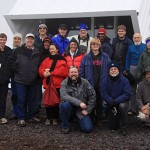
Again we visited the coating facility, complete with the massive cranes and the vacuum chamber needed to coat mirrors up to three and a half meters in diameter. This facility is also used by the IRTF and UKIRT observatories to coat the primary mirrors for those telescopes. A treat for me was visiting the OHANA interferometer test lab in the coudé room below the telescope. A project I knew a fair amount about, but had never seen.
The tour finally arrived at the telescope itself. The large equatorial design is such a contrast to the alt-azimuth designs of the more modern designs of Gemini, Subaru and Keck. The enormous steel horseshoe and yoke represent a classic design used for large telescopes throughout the 20th century. We wandered about the dome floor, learning about the details of the telescope, the drives, and the instruments. The AO system was scheduled for the night and was mounted to the telescope. While the massive MegaCam prime focus camera was sitting to the side of the telescope.
The hoped for view of sunset from the upper balcony of the CFHT telescope was nothing to write about. Clouds obscuring all but a hint of sunset’s colors. The final treat was instead an opportunity to ride the rotating dome while the telescope slewed. The show highlighted this big machine, a testament to the people who build and operate these telescopes to push the boundaries of human knowledge deep into the universe.
These tours take a fair amount of work to put together, but are very much worth it. I expect we will do another tour in the spring. Perhaps do a couple of the radio telescopes? CSO, JCMT or SMA? Personally I have never had a chance to properly appreciate the sub-millimeter observatories on the summit. CSO is due to be dismantled in a couple years, it would be a good time to visit this groundbreaking facility.
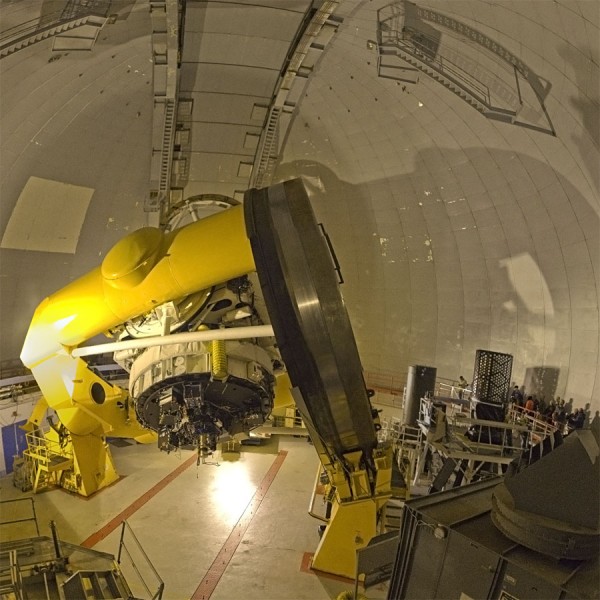
Shut it down! Shut it all down!
I get home from shopping in Kona and unloading a pile of groceries from Costco. Looking forward to a relaxing Saturday evening. That changed when I checked my e-mail.
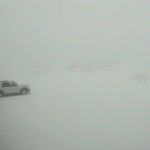
Much of the systems on the summit are automated, up to and including sending e-mails when thing go wrong. The system works pretty well at letting the engineering staff know when attention is needed. The automated messages do tend to bomb a person’s inbox when it really goes bad.
Dozens of warning messages have flooded my inbox…
WARNING! K2AO temps are warm! dmrackTemp=45.42 degC, enclosTemp=37 degC
Ugly numbers indeed! 37°C is about 100°F in the AO electronics room. I have no choice… shut it down. Messages from MKSS indicate that the power lines have been hit by lightning and the power is out to the summit. The backup power is holding out, but the glycol cooling system is off. Without cold glycol flowing in the lines many of the rooms are without cooling systems to take away the heat generated by all of the computers and other electronics.